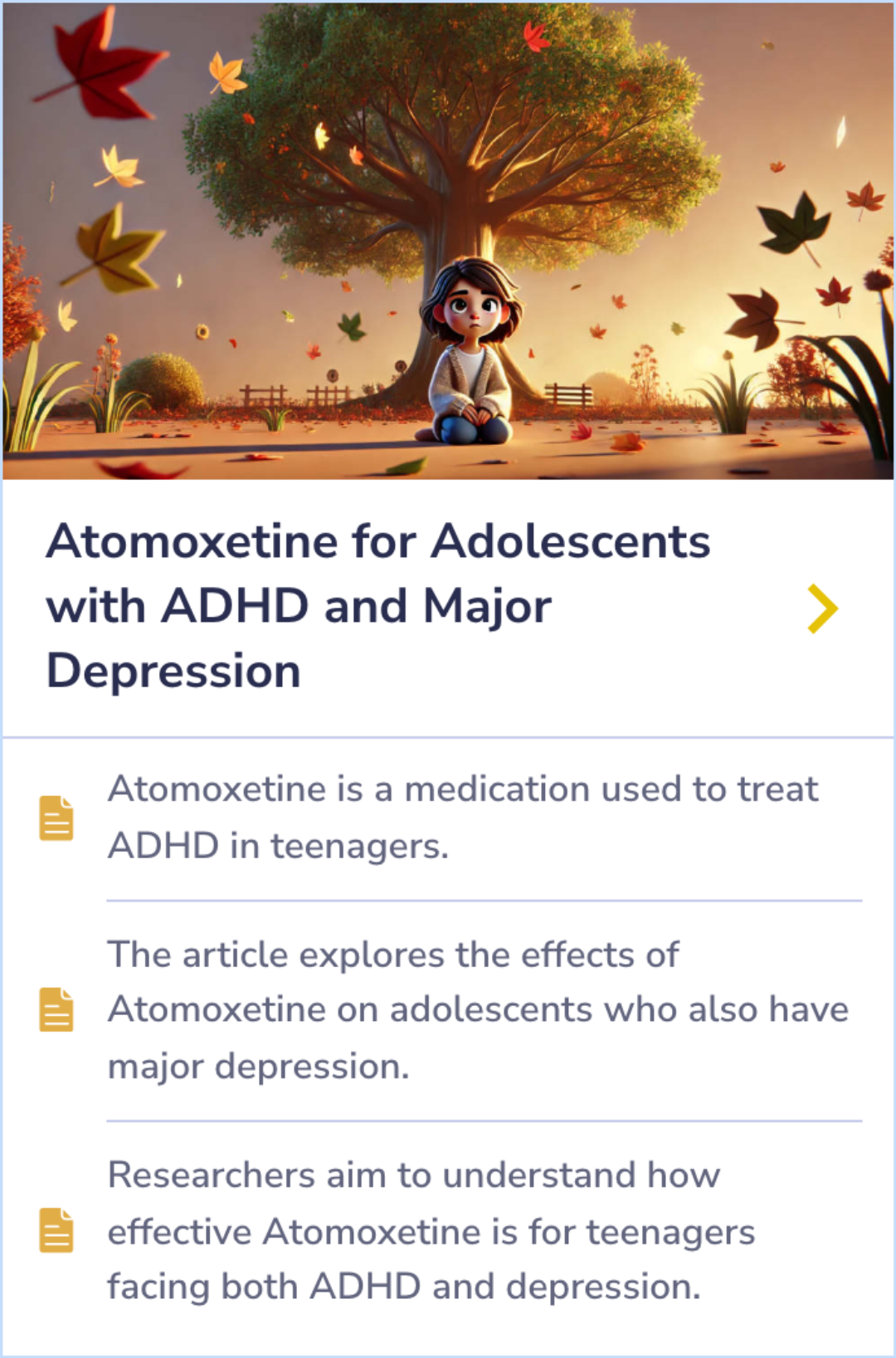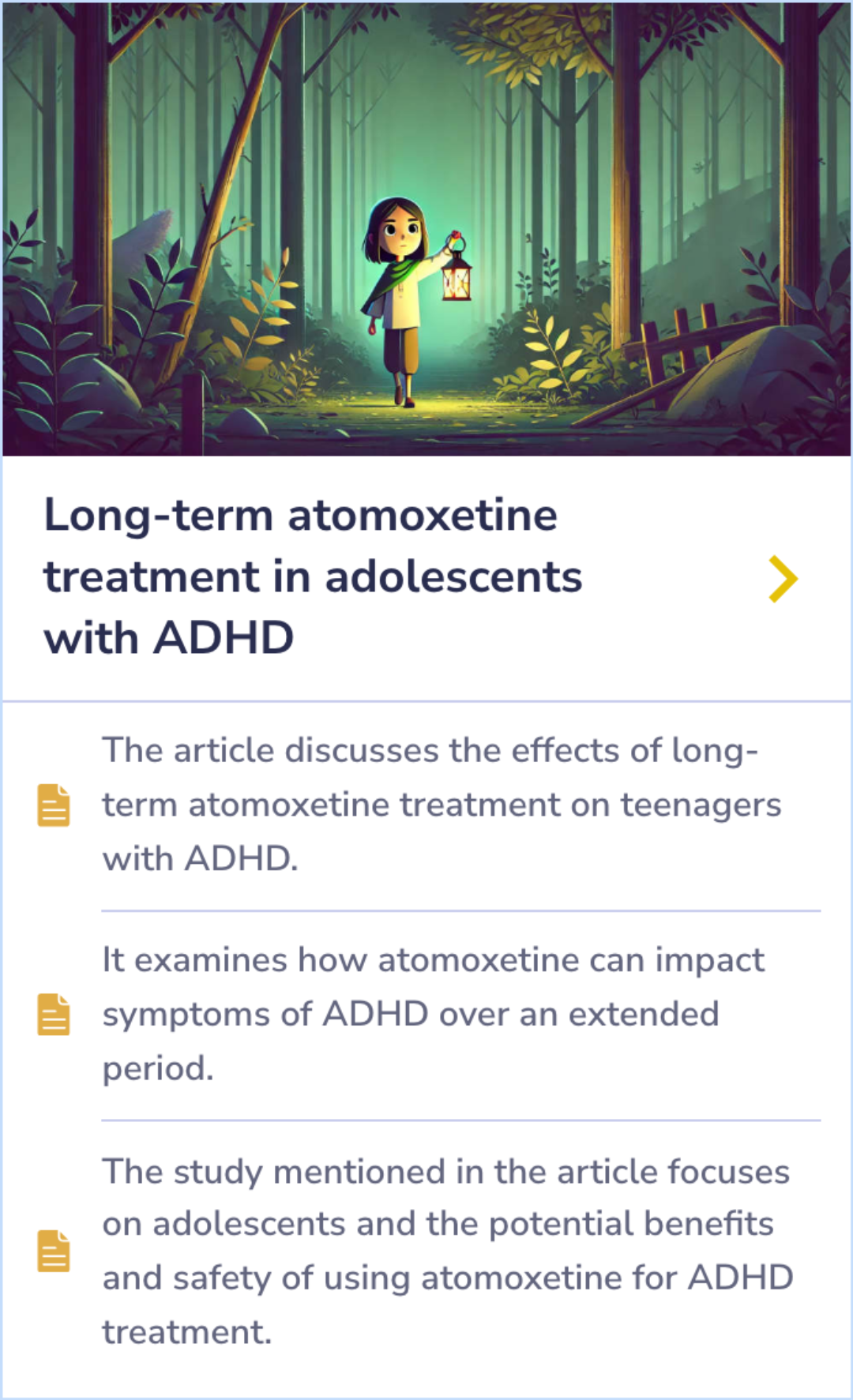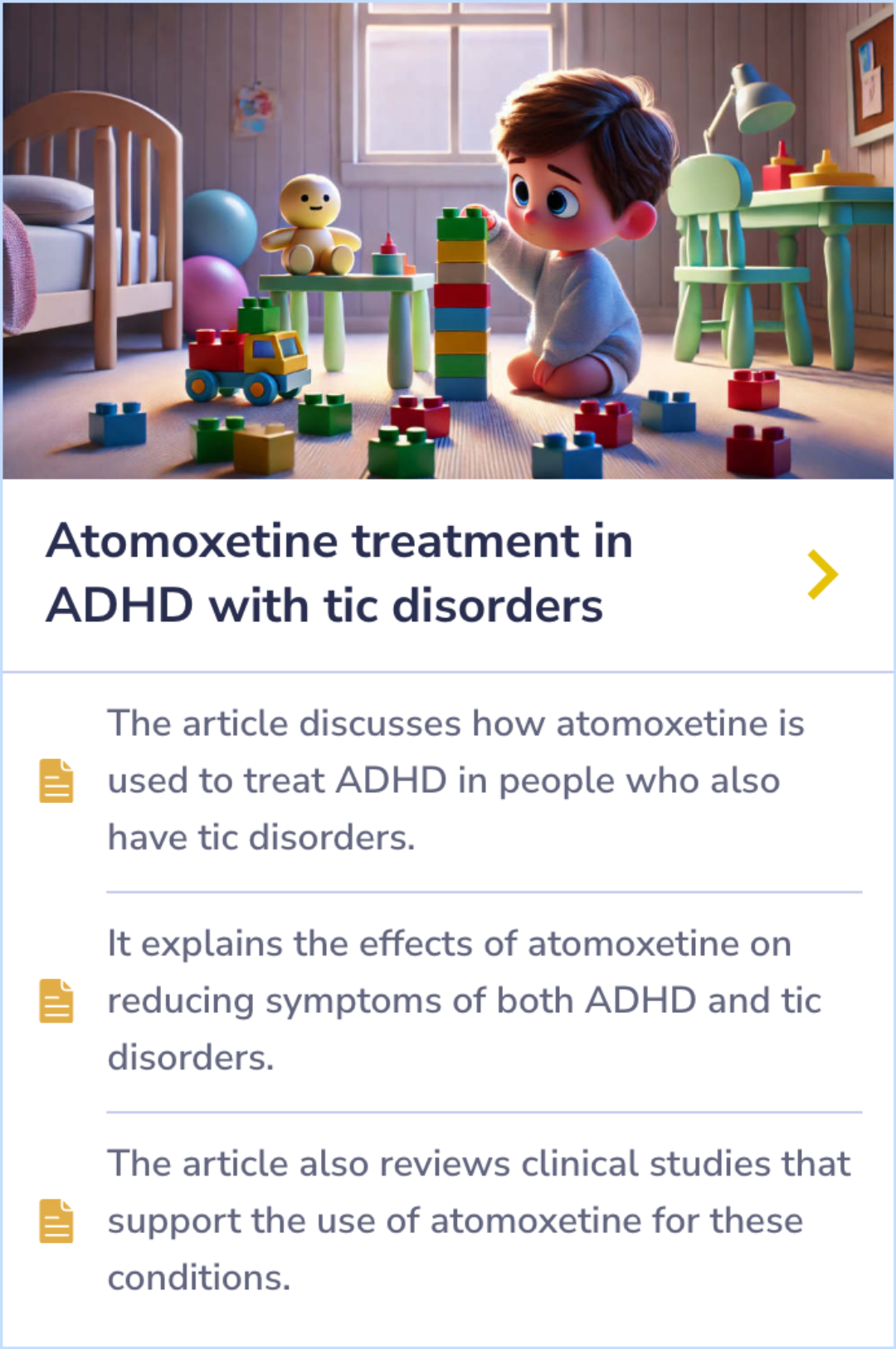Strattera Paper Database
Visual Abstract
Efficacy and safety of atomoxetine in adolescents with attention-deficit/hyperactivity disorder and major depression
Atomoxetine for Adolescents with ADHD and Major Depression
September 15, 2024
author
Atomoxetine ADHD and Comorbid MDD Study Group, Bangs ME, Emslie GJ, Spencer TJ, Ramsey JL, Carlson C, Bartky EJ, Busner J, Duesenberg DA, Harshawat P, Kaplan SL, Quintana H, Allen AJ, Sumner CR
journal
J Child Adolesc Psychopharmacol
Date Published
2007 Aug
Why link to a visual abstract?
What is a visual abstract?
Original
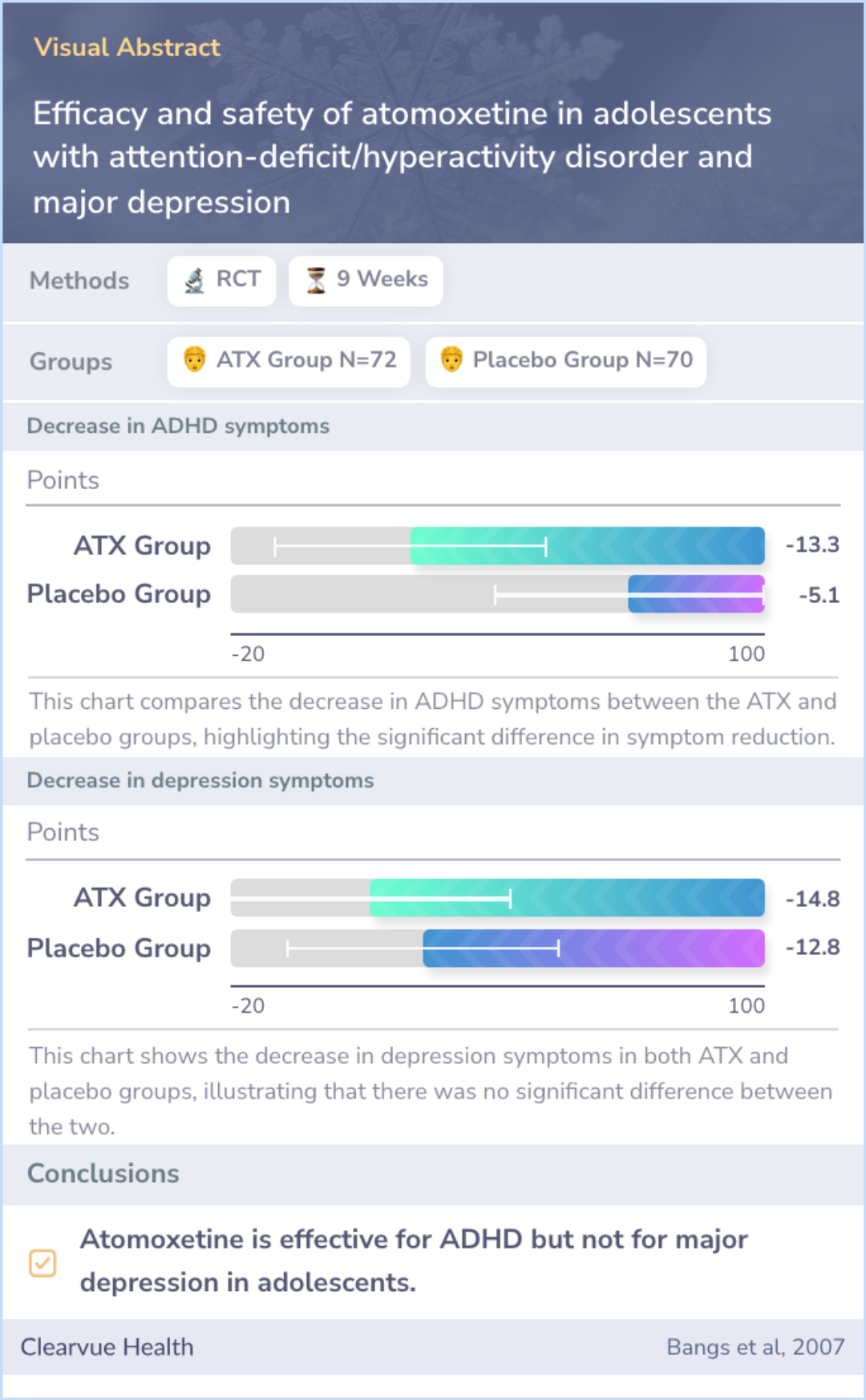
Study Summary
🔬
What They Studied
The study explored the effectiveness and safety of atomoxetine for adolescents with both ADHD and major depressive disorder.
💡
What They Found
The study found that atomoxetine was effective in treating ADHD but not major depression in adolescents.
📚
What This Means
These findings align with current evidence suggesting that atomoxetine is effective for ADHD treatment but does not support its use for major depression.
Study Summary
Study Overview
This study aimed to explore the effectiveness of ATX in treating ADHD symptoms in adolescents with co-existing major depressive disorder (MDD). Researchers found that ATX worked well to reduce ADHD symptoms, even in those also dealing with depression.
Interestingly, while some concerns existed about potential mood issues and suicidal thoughts, ATX did not seem to worsen the patients' depression, providing a sense of safety in its use for this dual-diagnosis group.
Interestingly, while some concerns existed about potential mood issues and suicidal thoughts, ATX did not seem to worsen the patients' depression, providing a sense of safety in its use for this dual-diagnosis group.
Abstract: background
This double-blind study examined efficacy and safety of atomoxetine (ATX; <=1.8mg/kg per day) in adolescents aged 12-18 with Diagnostic and Statistical Manual of Mental Disorders, 4th edition (DSM-IV) diagnoses of both attention-deficit/hyperactivity...more

Effectiveness of ATX
"ATX was an effective and safe treatment for ADHD in adolescents with ADHD and MDD."
Safety of ATX
"ATX did not seem to worsen depression in this study according to the analyses of categorical changes in CDRS-R T-scores."
Understanding Co-morbidity
"The presence of ADHD and co-morbid disorders is an important predictor of impaired outcomes, and early recognition is critical for intervention strategies because the presence of ADHD and co-morbid depression may affect the response to treatment."
Study Summary
Methods
To ensure accurate diagnosis, researchers used specialized interviews and assessments for understanding mood and behavior. Adolescents were then divided into two groups; one received atomoxetine, and the other received a placebo for about nine weeks. Each group had over 70 participants.
The study's rigorous selection process meant only those with high symptom levels participated. This approach ensured any noticeable changes could be directly linked to the treatment provided, allowing for clearer results about its potential benefits.
The study's rigorous selection process meant only those with high symptom levels participated. This approach ensured any noticeable changes could be directly linked to the treatment provided, allowing for clearer results about its potential benefits.
Abstract: methods
Diagnoses were confirmed by the Kiddie Schedule for Affective Disorders and Schizophrenia for School Age Children-Present and Lifetime Version and persistently elevated scores on the Attention-Deficit/Hyperactivity Disorder Rating Scale-IV, Parent ve...more

Study Summary
Results
Participants treated with atomoxetine showed more improvement in managing ADHD symptoms compared to those on placebo. However, for symptoms of depression, both groups showed similar levels of improvement, suggesting atomoxetine didn't significantly help with depression.
The study found no significant differences in the emergence of manic episodes between groups. Yet, those on atomoxetine experienced more nausea and appetite loss. Importantly, there were no reports of serious side effects like suicidal thoughts in either group.
The study found no significant differences in the emergence of manic episodes between groups. Yet, those on atomoxetine experienced more nausea and appetite loss. Importantly, there were no reports of serious side effects like suicidal thoughts in either group.
Abstract: results
Mean decrease in ADHDRS-IV-Parent:Inv total score was significantly greater in the ATX group (-13.3 +/- 10.0) compared with the placebo group (-5.1 +/- 9.9; p < 0.001). Mean CDRS-R score improvement was not significantly different between groups (ATX...more
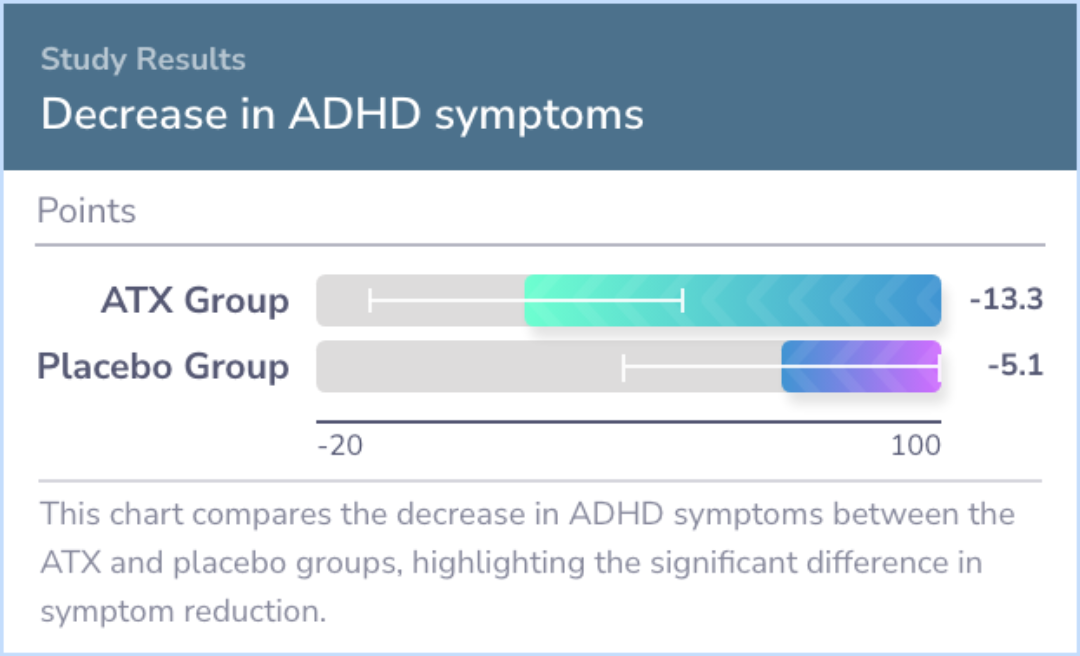
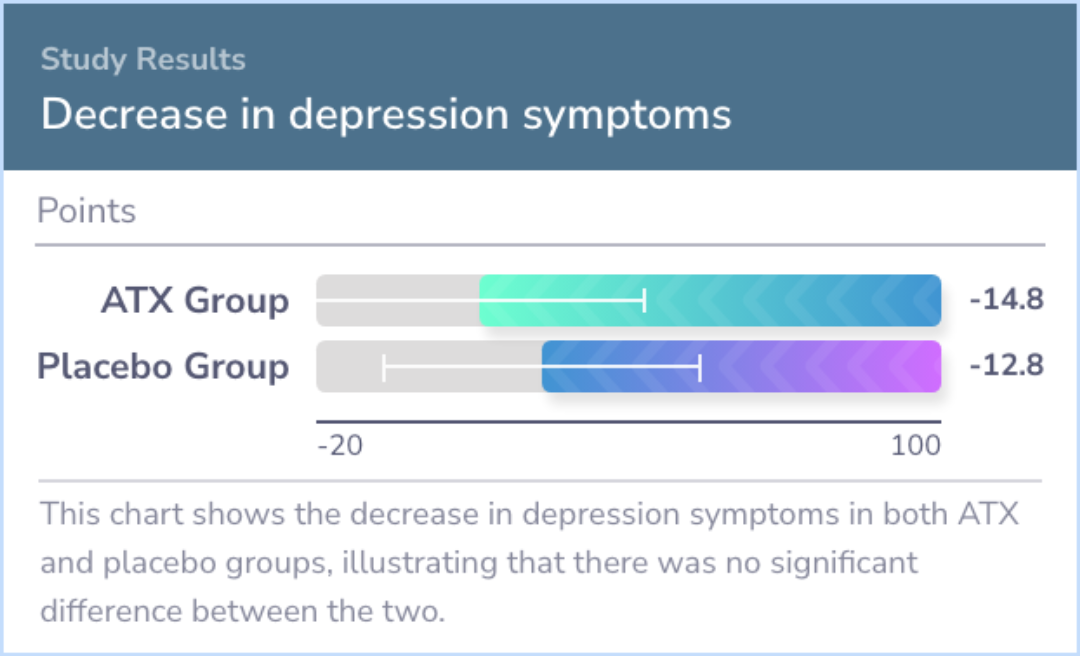
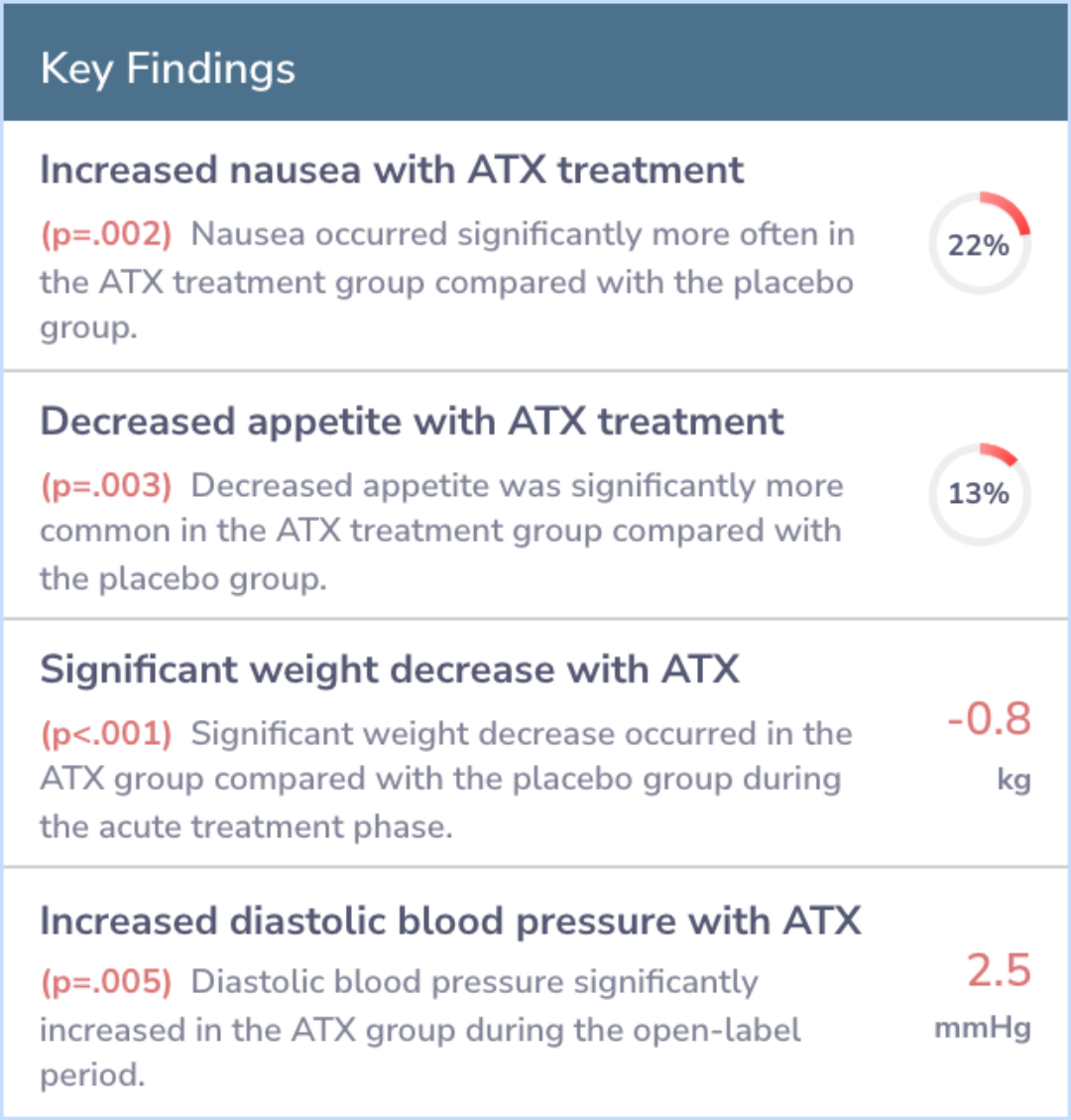
Study Summary
Conclusions
The findings suggested atomoxetine, or Strattera, effectively managed ADHD symptoms in teenagers who also had depression. Its safety profile was acceptable, though some side effects like nausea were noted.
Despite these positive outcomes for ADHD, the treatment did not prove effective for addressing depressive symptoms in the participants. This indicates atomoxetine might be best used primarily for ADHD, not as a dual-treatment option for both conditions.
Despite these positive outcomes for ADHD, the treatment did not prove effective for addressing depressive symptoms in the participants. This indicates atomoxetine might be best used primarily for ADHD, not as a dual-treatment option for both conditions.
Abstract: conclusions
ATX was an effective and safe treatment for ADHD in adolescents with ADHD and MDD. However, this trial showed no evidence for ATX of efficacy in treating MDD.
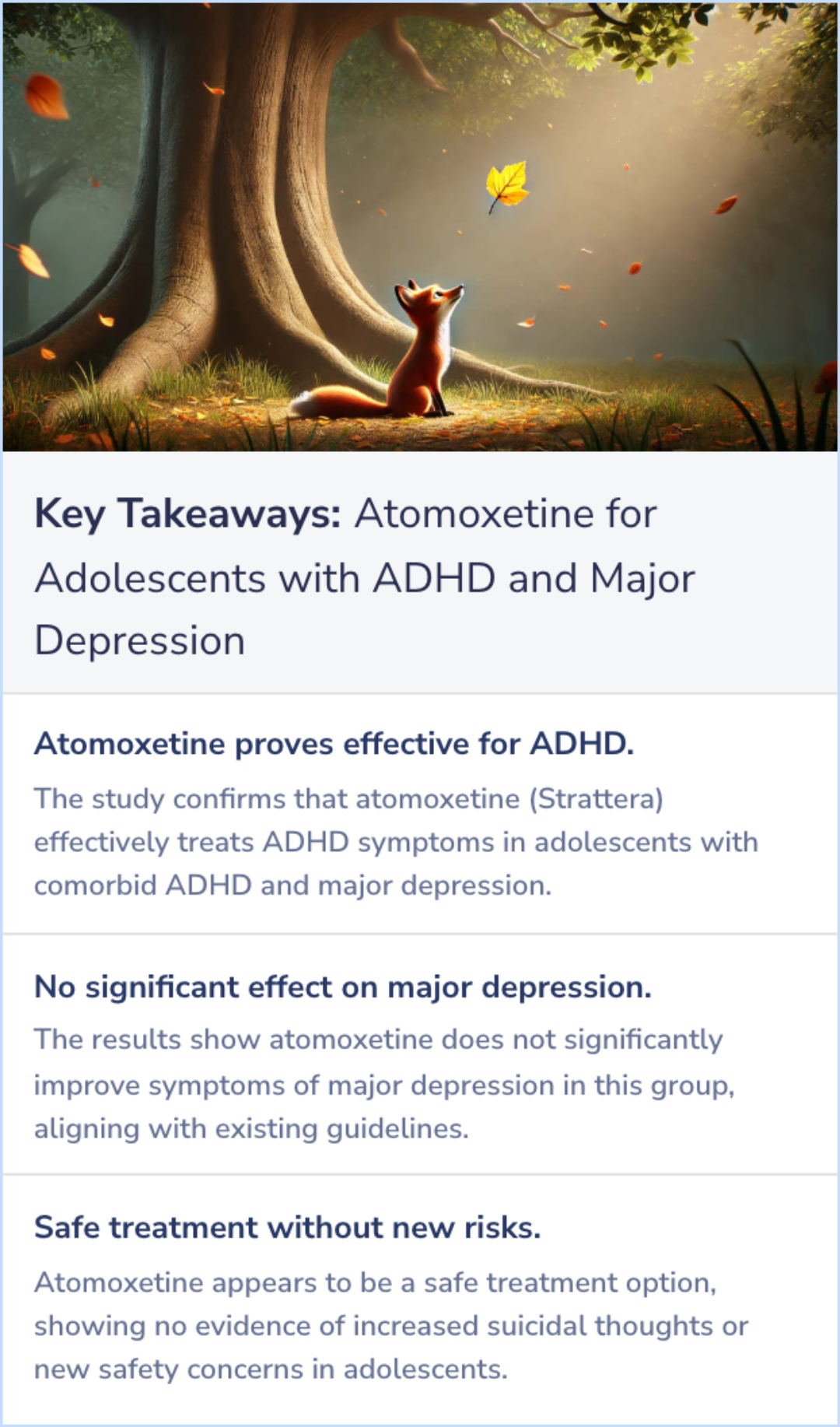
Background Information
Patient Guide
💊
ADHD Treatment Approval
Strattera is FDA-approved for treating ADHD in those over six years old.
⚙️
Mechanism of Action
Atomoxetine is a selective norepinephrine reuptake inhibitor affecting dopamine in some brain regions.
🧠
Comprehensive Program Inclusion
Part of a broader treatment program encompassing psychological and educational interventions.
🤕
Common Adverse Effects
Includes nausea, decreased appetite, headache, and insomnia. Close monitoring required.
🧠
Psychiatric Monitoring Needs
Monitor for manic or psychotic symptoms, particularly in cases with bipolar disorder.
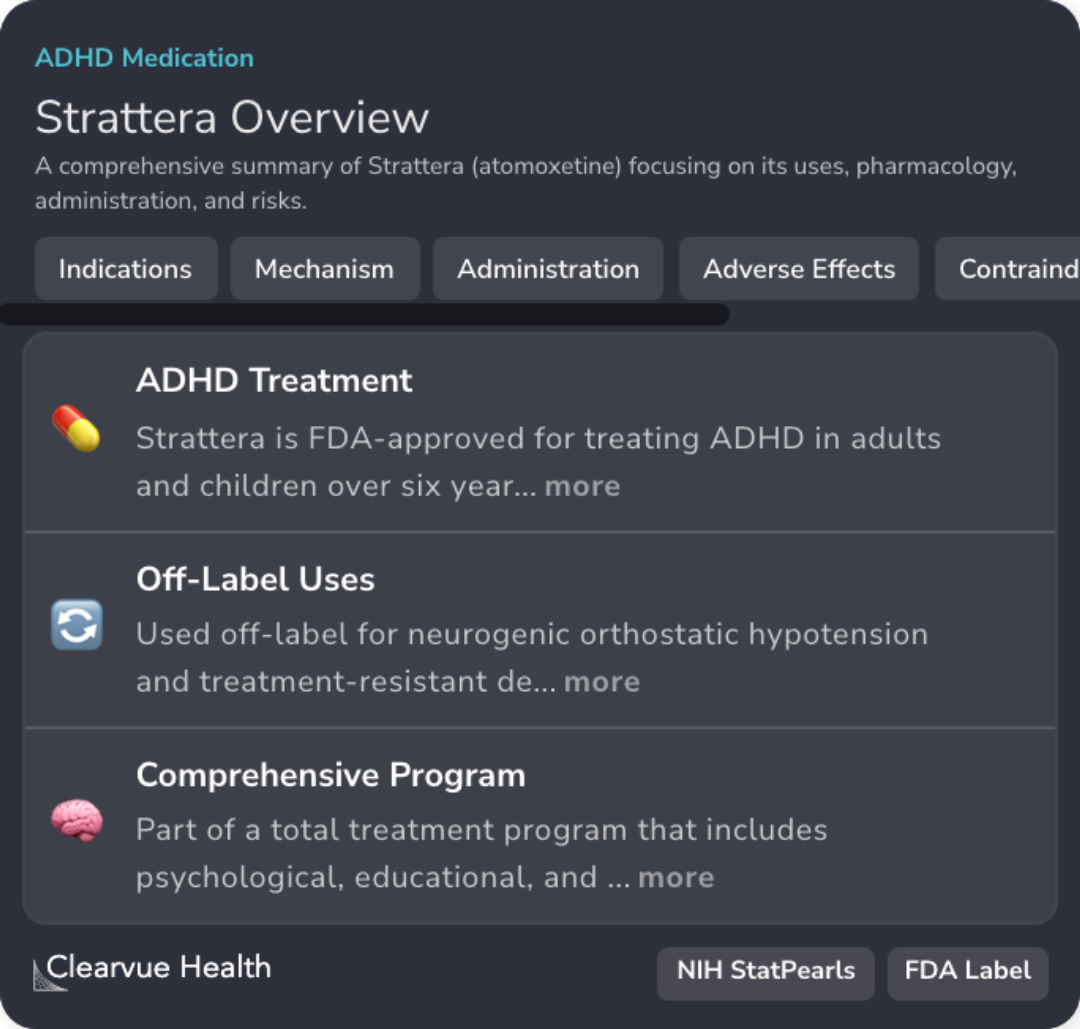
Professional Guide
Expert Opinion: Atomoxetine for Adolescents with ADHD and Major Depression
In line with the study's findings, atomoxetine's efficacy in ADHD may be attributed to its inhibition of norepinephrine and dopamine reuptake, particularly in the prefrontal cortex.
As the first non-stimulant FDA-approved for ADHD, atomoxetine's metabolization varies significantly with CYP2D6 status, necessitating dose adjustments when coadministered with CYP2D6 inhibitors.
Monitoring for psychiatric symptoms and growth in children, alongside precautions due to its boxed warning for suicidal ideation, underscores its clinical administration specifics.
As the first non-stimulant FDA-approved for ADHD, atomoxetine's metabolization varies significantly with CYP2D6 status, necessitating dose adjustments when coadministered with CYP2D6 inhibitors.
Monitoring for psychiatric symptoms and growth in children, alongside precautions due to its boxed warning for suicidal ideation, underscores its clinical administration specifics.
Evidence Summary
Evaluating Atomoxetine for Adolescents with Dual Diagnoses
Atomoxetine has been studied as a treatment for teenagers facing both ADHD and major depression. The study focuses on how well Atomoxetine works in this specific group. Researchers are particularly interested in understanding whether it effectively manages the dual challenges these adolescents face.
This medication is being evaluated for its impact on both conditions simultaneously, highlighting the complexities of treating co-occurring disorders in this age group.
This medication is being evaluated for its impact on both conditions simultaneously, highlighting the complexities of treating co-occurring disorders in this age group.
Evidence Summary
Strattera's Impact on ADHD Symptoms Over Time
The study examines how long-term use of Strattera influences ADHD symptoms in teenagers. It focuses on evaluating the treatment’s safety and benefits over time, offering insights into how adolescents respond to this medication.
The research highlights the specific effects of prolonged Strattera treatment on ADHD symptoms, shedding light on its potential to manage this condition during adolescence.
The research highlights the specific effects of prolonged Strattera treatment on ADHD symptoms, shedding light on its potential to manage this condition during adolescence.
Evidence Summary
Atomoxetine: Effective for ADHD and Tics
Atomoxetine helps manage ADHD symptoms in patients with tic disorders, offering relief for both conditions simultaneously. Clinical studies back up its effectiveness in reducing these symptoms.
The treatment's dual impact on ADHD and tics makes it a valuable option for individuals dealing with these co-occurring disorders. The article also highlights supportive findings from relevant studies.
The treatment's dual impact on ADHD and tics makes it a valuable option for individuals dealing with these co-occurring disorders. The article also highlights supportive findings from relevant studies.

